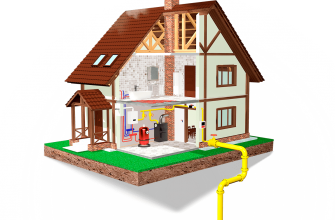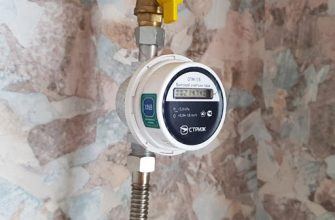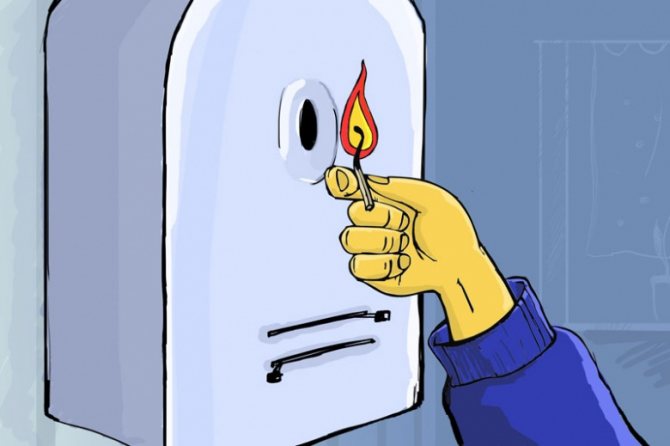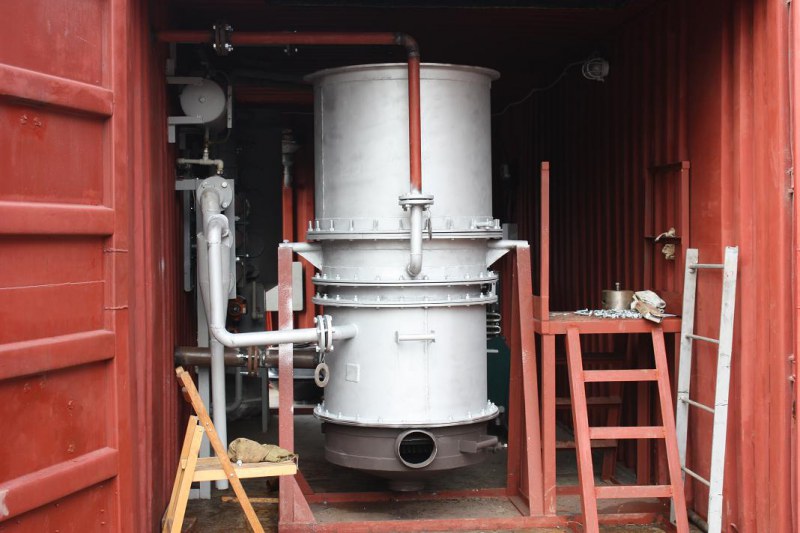A standard dielectric gas insert is installed in gas pipeline systems to prevent stray currents. The structure of the element, its purpose and the principle of operation should be known to every user, since the safety of all equipment operating on gas depends on it.
Dielectric gas insert device
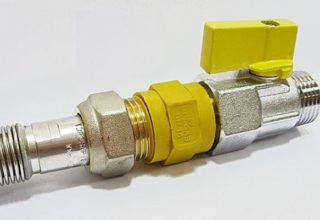
The dielectric sleeve or gas insert is a shut-off type fitting that is placed on the element between the valve and the supply part to the gas unit. This element is divided into two categories based on its appearance and installation method. Simple inserts are attached between the gas pipeline device and a hose suitable for a particular system, while more modern sleeves are mounted at the joints of the pipe parts.
Such couplings differ in size, varying taking into account the diameter of the thread, most often parts with numbers 1/2, 3/4 and 1 are used. The presence of several element options allows you to select a product for a specific size of flexible-type bellows liner. The thread at the coupling can be internal or external. Bushings and inserts have identical strength parameters and can withstand pressures up to 6 atmospheres.
Most often, the insulating insert on any gas pipeline is made of polyamide, this material belongs to the category of non-combustible polymers, its resistance varies within 5 million ohms.
Causes of leakage currents
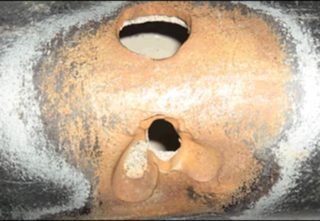
Wandering currents are usually formed underground due to impulsive breakdowns of household or factory lines from power lines. The source for voltage in such cases is the ground loop, railway or tram tracks. This type of current enters the gas pipeline system due to the differences between the resistance of the soil and metal particles from the pipeline for dispensing fuel. As a result, the entire volume of electricity trapped in the ground does not go inside it, but passes into metal elements or bare wires. Current can be generated within the system at any time, since most household or public gas pipelines are made of metal.
Often the main pipe becomes the cause of stray stress. To protect the pipeline from rust, it is loaded with electricity potential with little force. It blocks the process of electrochemical separation within structural materials. If a dielectric gas coupling is damaged in a single insulator, a good protection potential is converted into excess current. In addition, such a voltage can arise due to poor grounding of circulation pumps or other parts that come into contact with the wiring of the heating system or a domestic branch of the pipeline.
A gas flow dielectric can eliminate serious problems and increase the safety level of everyone who uses gas equipment that is connected to a common system.
Applications and functions of dielectric inserts

Dielectric gas clutch is a mandatory element, the presence of which is provided for by the rules governing the construction of gas distribution systems SP 42-101-2003. It must be present in all types of pipelines, including versions with polyethylene pipes. If such a coupling is absent, the stove, column or other electrical devices can fail at any time after the appearance of a stray current or cause it. Sparks can occur inside the piping and cause a fire. Cases of self-ignition of the wiring occur quite often and can cause a major accident.
The detonation process of a gas-air mixture may well destroy a multi-storey building when the fire is not detected in time. If a stray current appears inside pipes due to an emergency or during a thunderstorm, the risk of serious injury to the owners of electrical appliances is significantly increased. A dielectric coupling for each gas pipe should be installed in any building or apartment where gas powered appliances are used and connected to electricity. In addition to its main functions, it prevents the formation of stray currents arising from problems during the installation of boilers, water heaters or gas stoves.
Types of dielectric gas inserts
Dielectric for a gas hose, according to the product range of elements for gas distribution devices, is divided into two standard categories. These are isolating valves, couplings, barrels or squeegees, as well as standard bushings. The choice of a particular type depends on the installation conditions and the characteristics of the particular system.
Insulating couplings
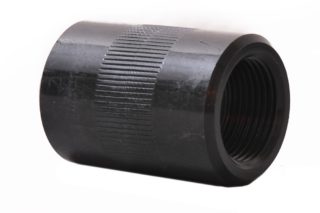
Couplings are divided into three categories, which differ from each other mainly in the threaded diameter, its value can be 15, 20 or 25 mm. Separation by this criterion makes it possible to mount inserts in any pipelines, since diameters less than 1/2 and more than 1/4 are not used in the Russian gas pipeline system. Subtypes of inserts, the so-called barrels, can have external threads on both elements, or internal and external threads on each.
Dielectric bushings
Such inserts are inserts that prevent the passage of electric current. They are placed between pipes with gas and wiring, the diameter of such elements ranges from 8-27 mm, both sides are supplemented with threads from the inside. Bushings are not inferior to couplings in terms of resistance and tensile strength, parts can withstand pressures up to 493 atmospheres.
Correct installation

An insulating sleeve or gas insert must be inserted between the gas cock and a bellows or other type of line. It is necessary to install the element taking into account safety requirements; before starting the installation, it will be necessary to turn off the valve and not open it until all the necessary steps have been taken to eliminate possible leaks. Installation must be carried out by gas service personnel with the appropriate qualifications and permission to work of this type. During installation you will need:
- Prepare a pair of adjustable wrenches, one of them is designed to hold the body from the valve, the second is to unscrew the nut from the inlet connecting the pipe to the device running on gas fuel.
- Install a seal of any type, for example, polymer, on the ends of the insert, then manually put the dielectric inside the gas pipeline.
- Holding the valve with one key, tighten the second sleeve or bushing until it stops; during the installation process, care must be taken not to accidentally rip off the threaded coating and damage the element body.
- Screw the nut from the bellows-type hose to the other part of the coupling, while holding the insert with an adjustable wrench, then tighten the connecting parts as tightly as possible.
When a standard gas dielectric is installed, you will need to check the joints for the level of tightness. For this purpose, use a small brush or shaving brush, which is thoroughly lathered. Soap solution must be applied to each inlet, as well as the joint, then slowly open the gas supply valve. If there is foam or bubbles, the tap is closed and the joints are re-inspected. It is possible to use the gas unit only after bubbles stop forming in the solution. The tightness test is never carried out with matches or a lighter; if there is a leak, a fire can cause a gas explosion.
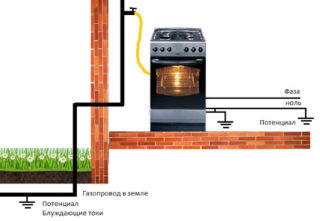
The installation of gas units and additional components is carried out with particular accuracy, since the safety of the residents of the building directly depends on the correct connection of the parts. Hoses are mounted according to the principle of open installation, the hoses should not be hidden or covered with furniture or household appliances, the element itself, as well as the dielectric sleeve or gas coupling must be mounted from the outside. Hoses that are too long or too short are not used to connect the equipment, as pressure can cause this part to become shorter, and in addition, it is forbidden to stretch it. The sleeve may sag after joining the pipe, but it should not be twisted or bent.
When installing a dielectric adapter for household gas, you need to make sure that steam or water does not get on the hose, which can provoke oxidation of metal parts. The hobs are placed away from the gas pipelines; if there are atypical threads in the plates and the rest of the equipment, adapters are used for connection.
It is not necessary to connect different materials together, for example, steel and copper. You also need to monitor the pressure on the element while tightening the connections, so as not to spoil or tear off the threaded coating. To ensure a tighter fit, an FUM tape must be used.
Popular manufacturers
You can choose the right insulator designed for gas supply among dielectrics of Russian or imported production.
The most popular are the parts from the Turkish brand Tuboflex, this company offers couplings and bushings with various types of threads and at an acceptable cost.
Inserts from the Italian manufacturer UDI-GAS have earned a good reputation, which offers innovative couplings equipped with additional protective layers.

